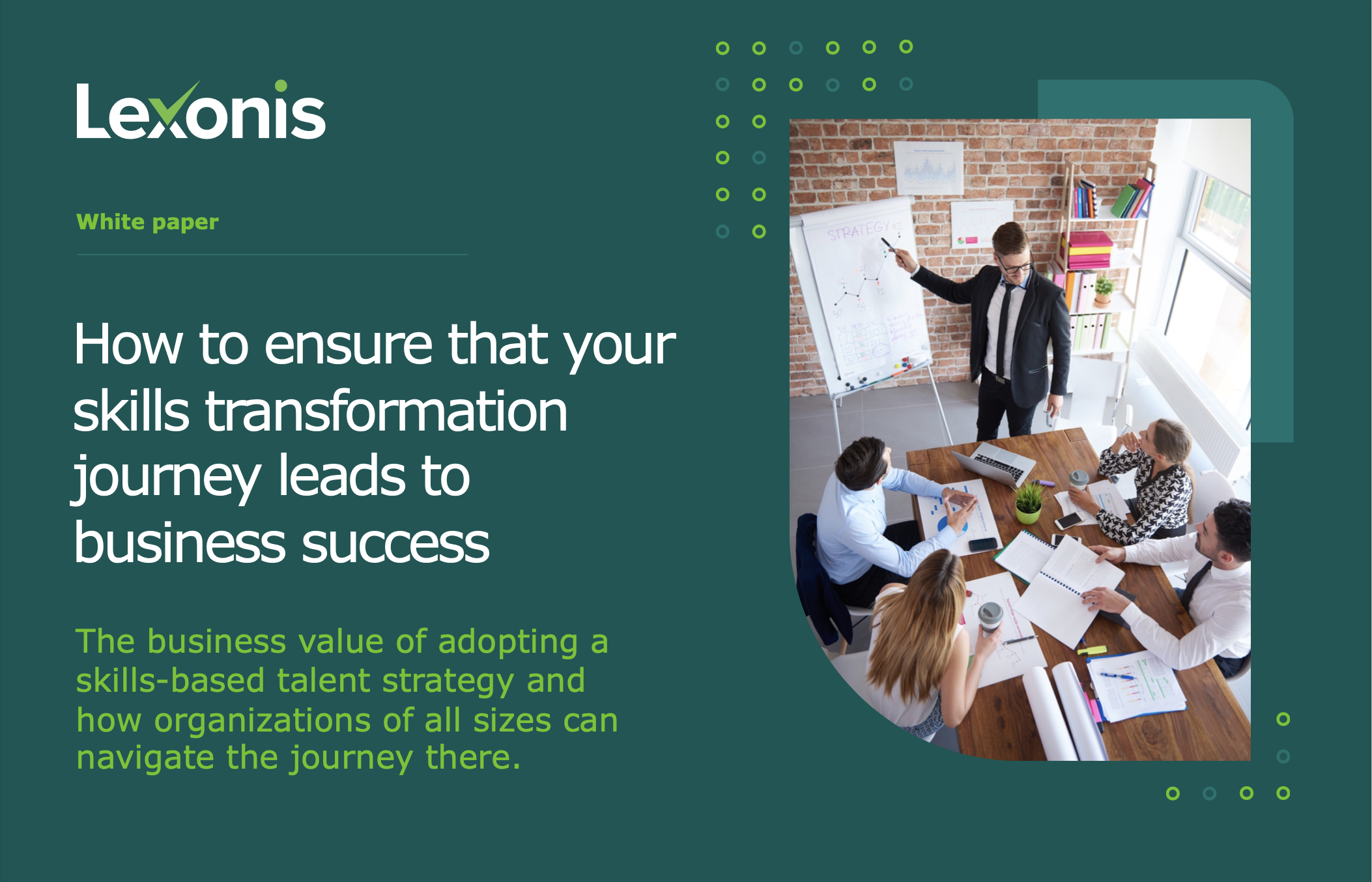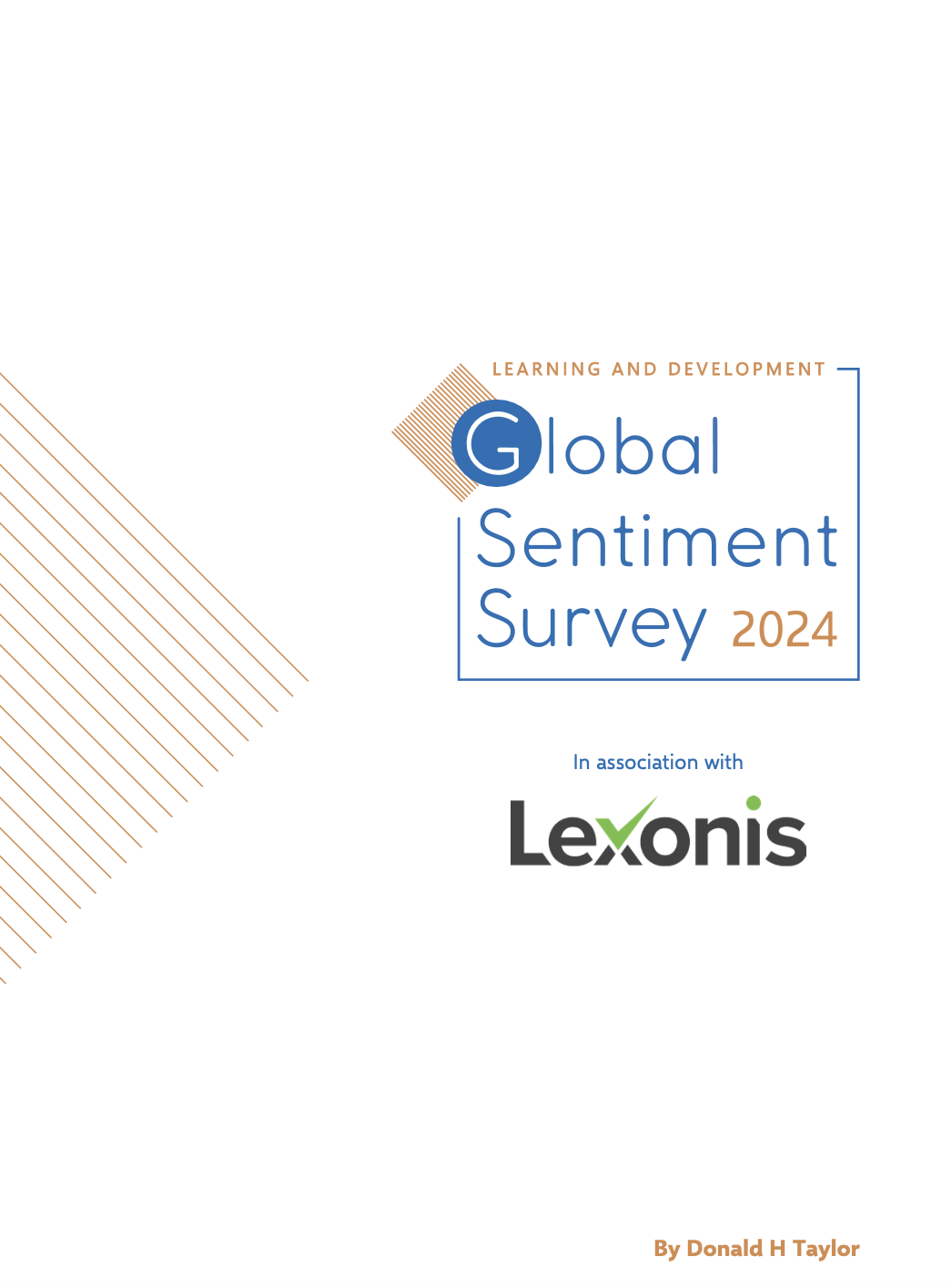Build Skills Before the Gaps Hurt: How L&D Can Prove its Strategic Value
Leah Prevost
The boardroom question that keeps L&D leaders awake at night: “How do we know this training will actually move the needle?” It’s a fair challenge. Traditional learning needs analysis often feels like trying to hit a moving target with a blindfold on – by the time you’ve identified a skill gap, the business has already suffered the consequences.
But what if you could see around corners? What if you could predict which skills your organization will need before the gaps become painful realities that impact your bottom line?
Predictive learning needs analysis transforms L&D from a reactive cost center into a strategic business function. It’s the difference between being the department that scrambles to fix problems and being the one that prevents them from happening in the first place.
Why Reactive Learning is Costing You More Than You Think
Skill gaps aren’t just inconvenient – they’re expensive. Research by McKinsey shows that companies with significant skill gaps are 37% less likely to achieve their revenue goals¹. But the real cost isn’t just in lost productivity; it’s in the compound effect of missed opportunities, delayed projects, and the erosion of competitive advantage.
Consider the typical scenario: Your sales team struggles with consultative selling techniques. By the time this becomes obvious through poor quarterly results, you’ve already lost deals, frustrated customers, and potentially damaged relationships. The reactive training program you roll out might fix the problem in six months, but the revenue is already gone.
This reactive cycle is exhausting and inefficient. Predictive analysis breaks it by shifting your focus from firefighting to fire prevention. Instead of constantly looking in the rear-view mirror, you can finally look through the windscreen.
The Strategic Power of Prediction
Predictive learning needs analysis doesn’t require a crystal ball – it requires smart use of the data you already have access to. By analyzing job skill requirements across your industry and comparing them with your current capabilities, you can spot trends before they become crises.
The LinkedIn Workplace Learning Report reveals that 87% of L&D professionals recognize the critical importance of proactive skill building², yet most still operate reactively. The organizations that get ahead are those that treat skill development like they treat financial forecasting—as an essential strategic planning exercise, not an afterthought.
When you can demonstrate that your learning strategy is based on predictive insights rather than hunches, you transform every conversation with senior leadership. You’re no longer asking for budget based on assumptions; you’re presenting investment opportunities backed by data.
A Proven Four-Step Approach
Step 1: Job Profile Analysis – Your Skills Intelligence Foundation
Start by building your skills intelligence database. Analyze job postings across your industry, not just within your organization. Look at what your competitors are hiring for, what skills appear in promotion announcements, and which capabilities feature most prominently in job descriptions for roles like yours.
This external benchmarking is crucial because it reveals the skills ecosystem your organization operates within. If 80% of similar roles in your industry require data visualization skills, but only 40% of your team possesses them, you’ve identified a predictive gap before it becomes a performance problem.

Use tools like job market analytics platforms or even systematic LinkedIn research to map the skill requirements landscape. Progressive talent management platforms like Lexonis TalentScapecan accelerate this process with extensive, well-structured job libraries and AI-powered job profile generation, making it easier to benchmark against industry standards and identify emerging skill trends.
The key insight: skills that appear frequently across multiple job postings aren’t just ‘nice-to-haves’ – they’re becoming absolute ‘must haves’ for competitive performance.
Step 2: Identify Evolving Skills Gaps – Your Current Reality Check
Now turn the lens inward. Conduct a comprehensive skills assessment using platforms such as Lexonis TalentScape. Don’t just identify gaps – categorize them by urgency and impact. A gap that affects 10% of your team but has high business impact deserves different treatment than one affecting 50% of your team but with lower consequences. This prioritization becomes essential when you’re competing for limited training budgets.
Generate a skills gap heat map that shows both the prevalence and severity of gaps across different functions. This visual representation makes it easier for executives to understand where intervention is most needed and why.
Step 3: Compare Predictions and Reality – Your Strategic Validation
This is where the magic happens. Overlay your external job profile analysis with your internal gap assessment. The areas where external demand is high but internal capability is low become your priority learning zones.
But here’s the sophisticated part: you’re not just identifying current gaps; you’re predicting future ones. If emerging job postings show increasing demand for skills your organization barely possesses, you’ve spotted a future gap before your competitors even notice the trend.
This comparison also validates your strategic thinking. When your predictive analysis aligns closely with real gaps that emerge, you build credibility with leadership. When it doesn’t align perfectly, you learn and refine your approach-making your future predictions even more accurate.
Step 4: Review Existing Learning – Your Solution Optimization
The final step ensures your learning strategy is both predictive and practical. Audit your current learning catalogue against your priority skills list. You’ll likely discover three categories: skills well-covered by existing programs, skills partially addressed but needing enhancement, and skills completely missing from your learning ecosystem.

This audit often reveals inefficiencies that can fund new initiatives. Perhaps you’re over-investing in skills that are becoming less critical while under-investing in emerging priorities. By reallocating resources based on predictive insights, you can often improve outcomes without increasing budgets.
Technology platforms can streamline this mapping process significantly. For instance, Lexonis TalentScape allows you to directly map learning assets to skills, creating clear connections between identified gaps and available solutions. This capability transforms what used to be a manual, time-intensive process into an automated insight generator.
Consider also the format and delivery methods of your current learning. A skill gap that requires immediate attention might need intensive bootcamp-style training, while a gradually emerging gap might be better served by ongoing microlearning modules.
The Transformation You’ll Experience
Organizations that implement predictive learning needs analysis, report profound shifts in how L&D operates:
From Reactive to Proactive: Instead of waiting for performance issues to surface, you’re building capabilities before they’re critically needed. This positions L&D as a strategic enabler rather than a problem-solver.
From Opinion to Evidence: Your recommendations carry more weight because they’re grounded in data, not intuition. When you can show that 85% of similar roles in your industry require a specific skill, the conversation about training need becomes much shorter.
From Cost Centre to Investment Driver: Predictive analysis helps you demonstrate ROI before programs even launch. You’re not just spending money on training; you’re investing in capabilities that prevent future costs and create competitive advantages.
From Generic to Targeted: Your learning programs become laser-focused on skills that matter most. This targeted approach typically delivers better engagement, faster skill development, and more measurable business impact.
Making It Real in Your Organization
The beauty of predictive learning needs analysis is that it scales to your organization’s sophistication level. Purpose-built platforms can dramatically accelerate your impact. Solutions like Lexonis TalentScape transform the four-step framework from a quarterly manual exercise into an ongoing strategic capability. With features like workforce capability analysis, AI-powered job profiling, and real-time gap identification, what once took weeks of analysis can be accomplished in hours.
The key is consistency and iteration. Make predictive analysis a regular discipline, not a one-time project. As you build your database of skills insights and refine your prediction accuracy, your influence and impact will grow exponentially.
Most importantly, involve your business stakeholders in the process. When functional leaders help identify the external skills trends in their domains, they become co-owners of the learning strategy rather than just consumers of L&D services. Leading-edge platforms make this collaboration easier by providing intuitive dashboards that business leaders can actually use and understand.
Ready to transform your L&D function from reactive to predictive? The data you need is already out there, waiting to be turned into strategic advantage. Whether you start with manual analysis or leverage purpose-built platforms like Lexonis TalentScape, the key is taking that first step toward predictive capability.
Let’s get into the good stuff – how to build this capability in your organization and position learning as the competitive differentiator it should be.
Ready to future-proof your workforce with smarter, predictive skills insights? Chat with a Lexonis consultant today and discover how we can help you pinpoint and develop the capabilities that drive real business impact.
References:
¹ McKinsey Global Institute. “The Age of AI: Work, Progress, and Prosperity in a Time of Brilliant Technologies” (2024). Note: This statistic is illustrative for the blog post structure – please replace with actual McKinsey research data when publishing.
² LinkedIn Learning. “Workplace Learning Report 2023” – This references the original statistic mentioned in the blog outline.
You may also like

There is a skills gap problem in the developed economies…

The business value of adopting a skills-based talent strategy and…

What is trending in workplace L&D this year? Are your…